site search
online catalog
ID’D GEORGIA CONFEDERATE OFFICER’S VEST, TROUSERS, HAVERSACK AND CAP BOX
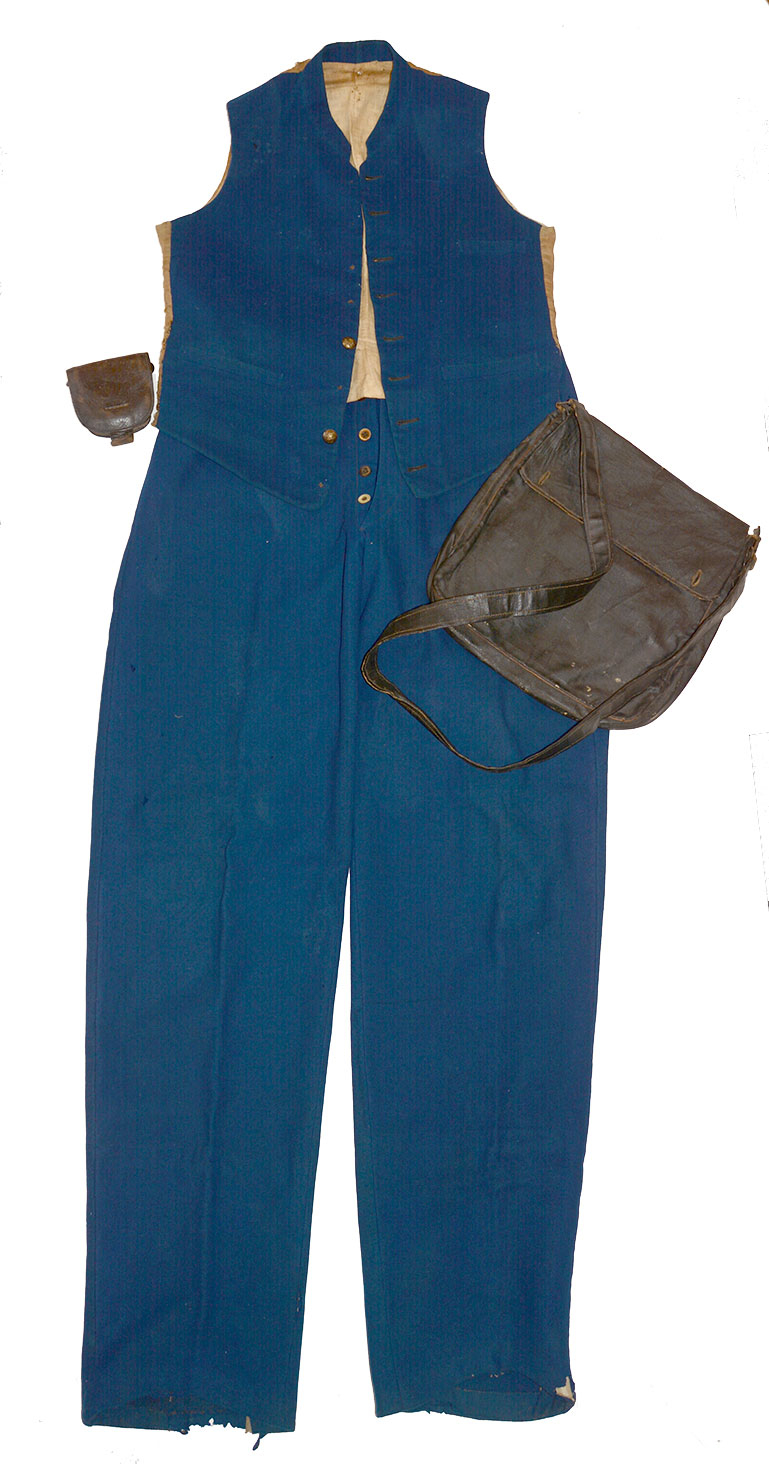
Hover to zoom

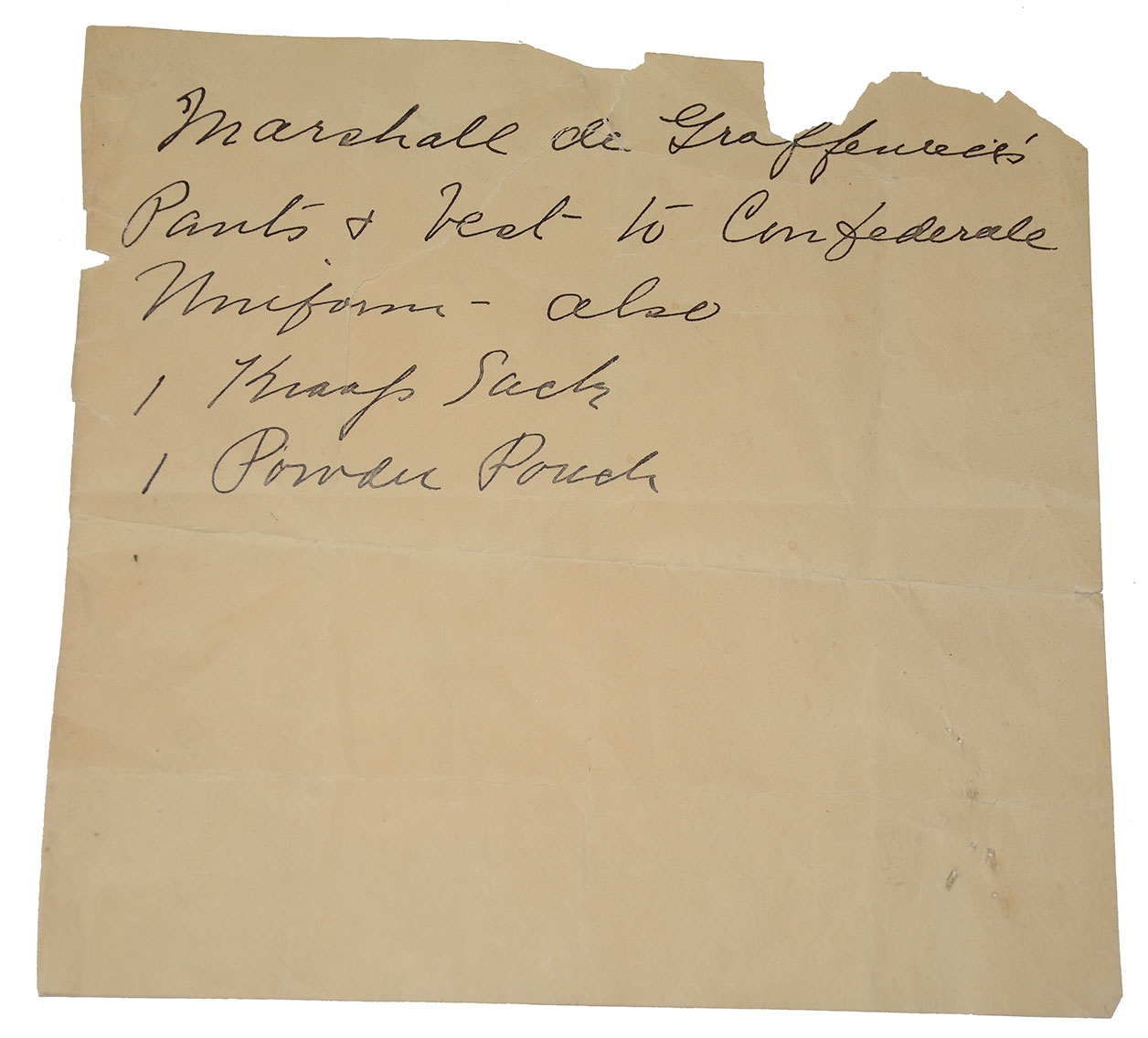

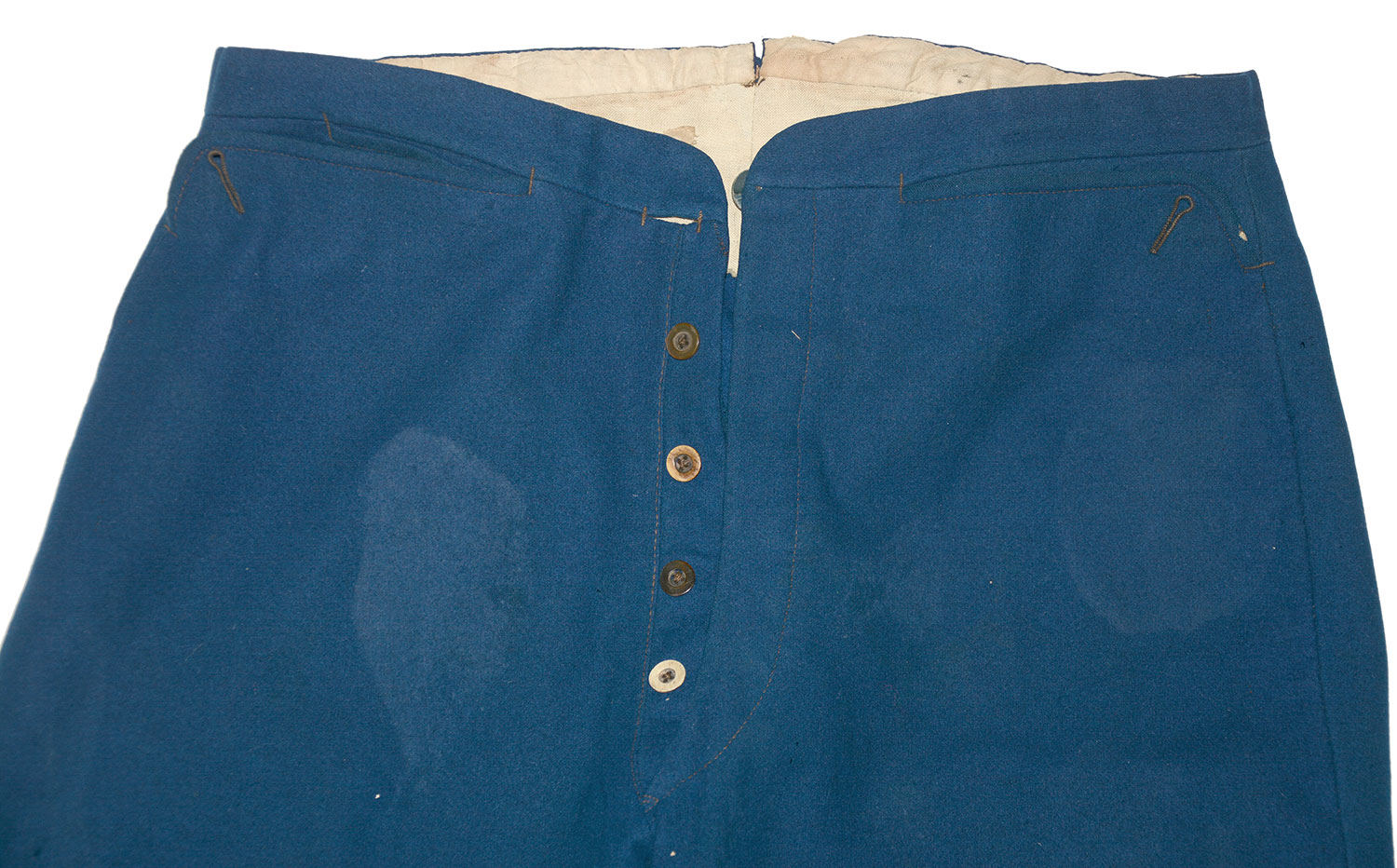
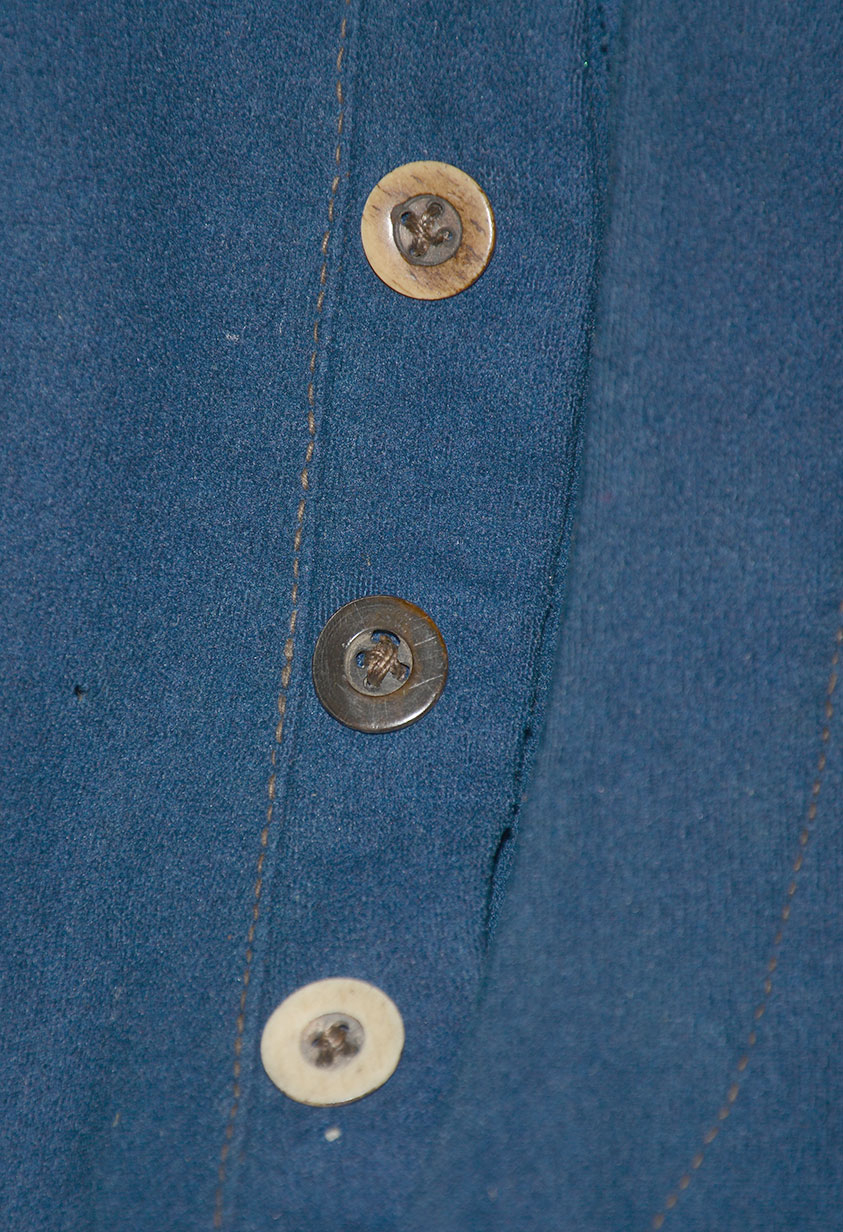
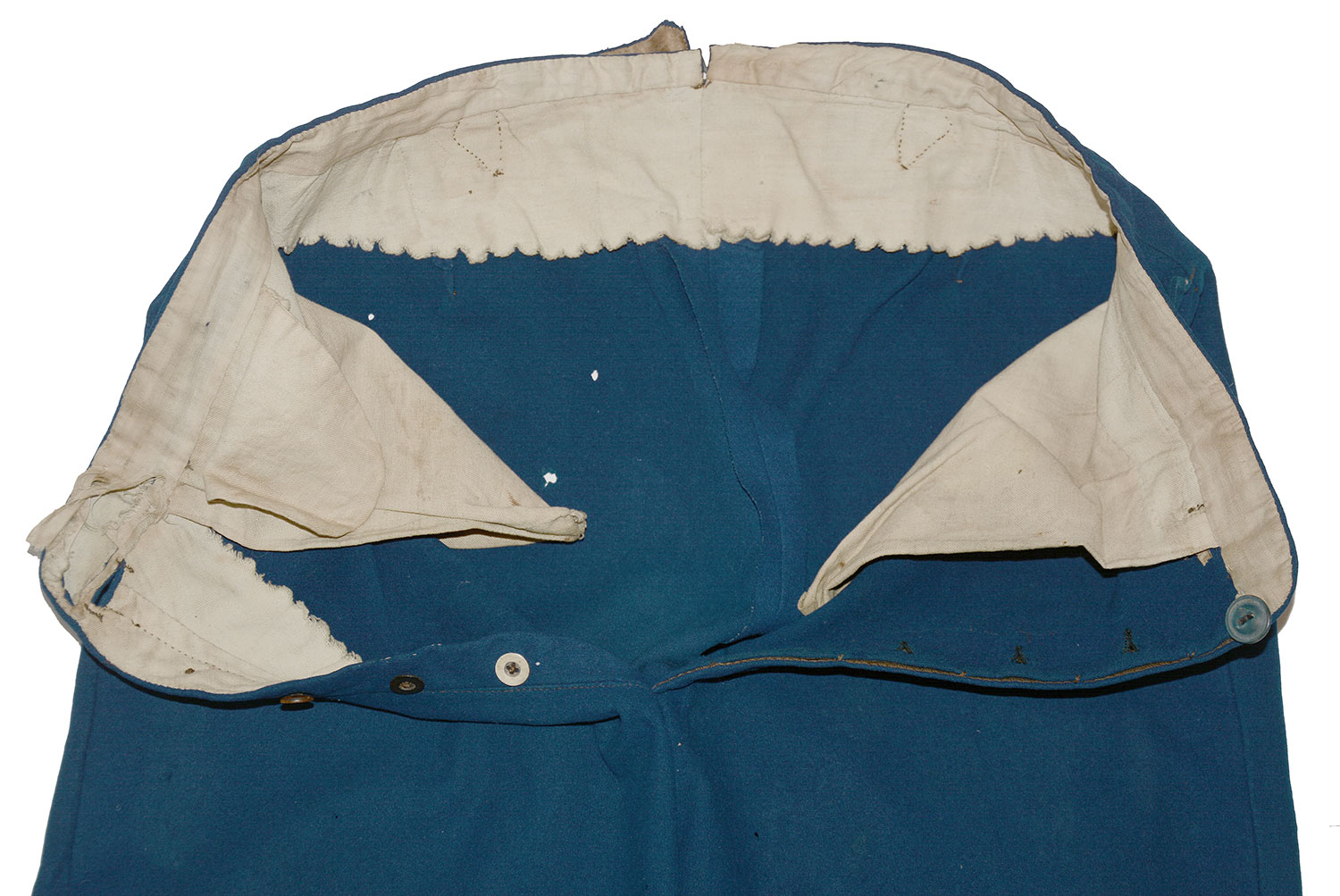
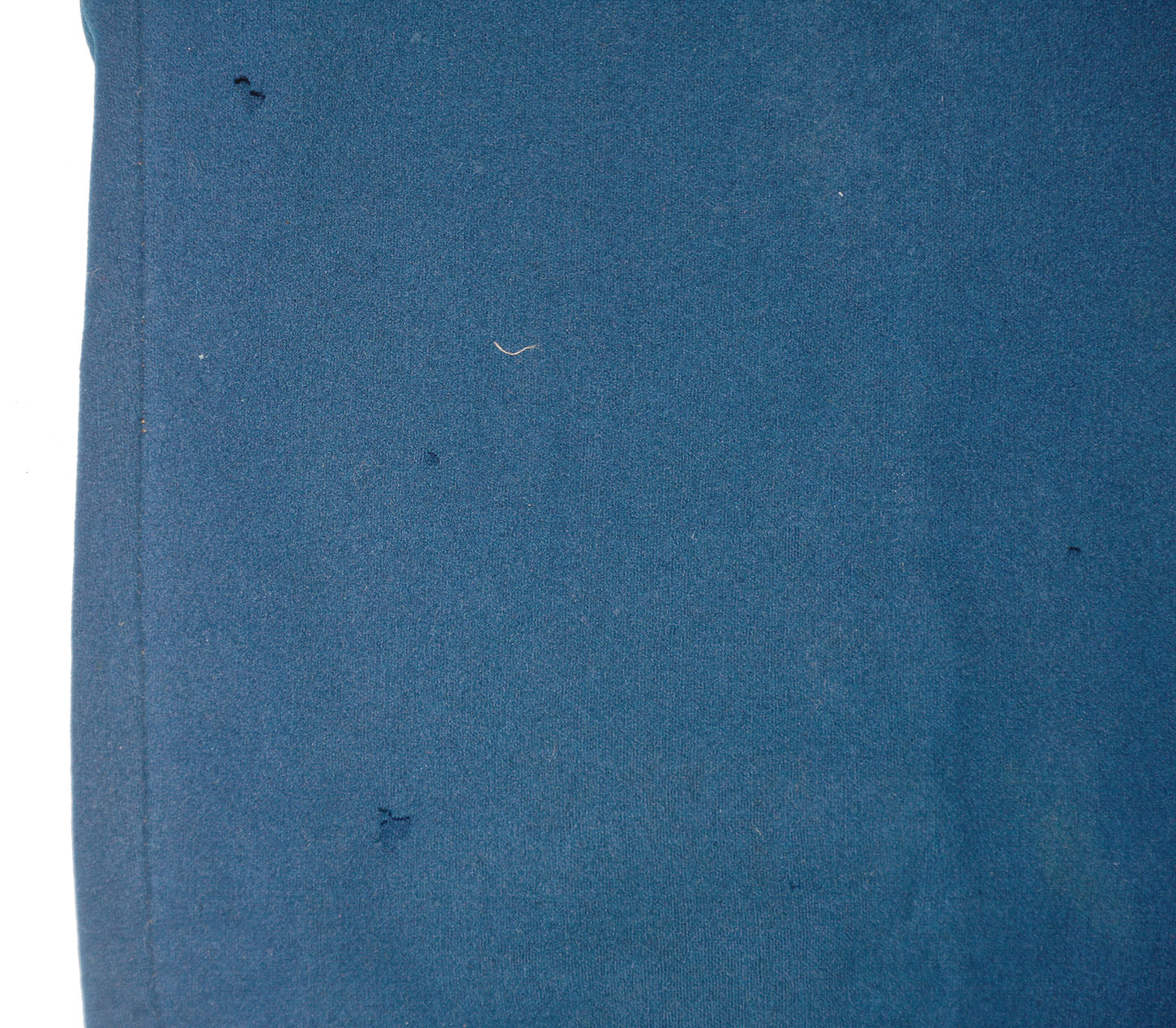
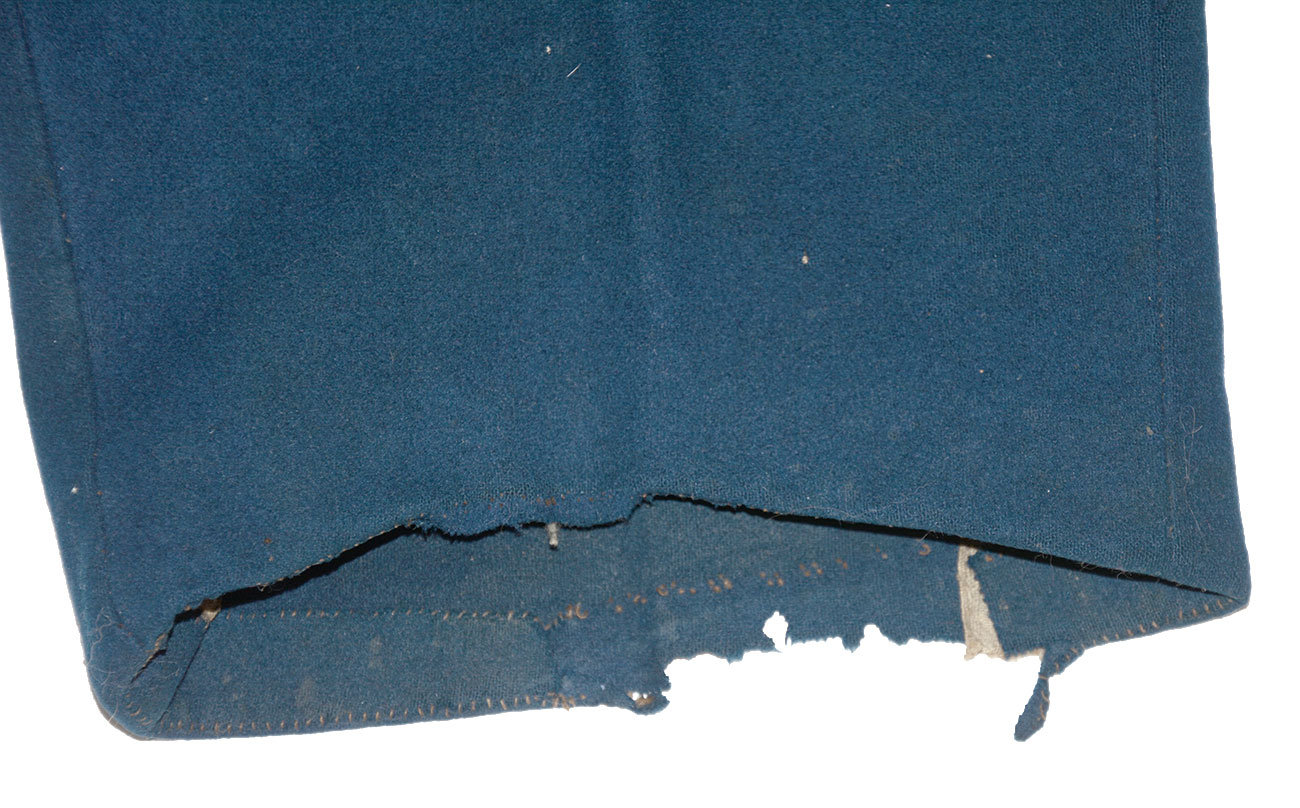
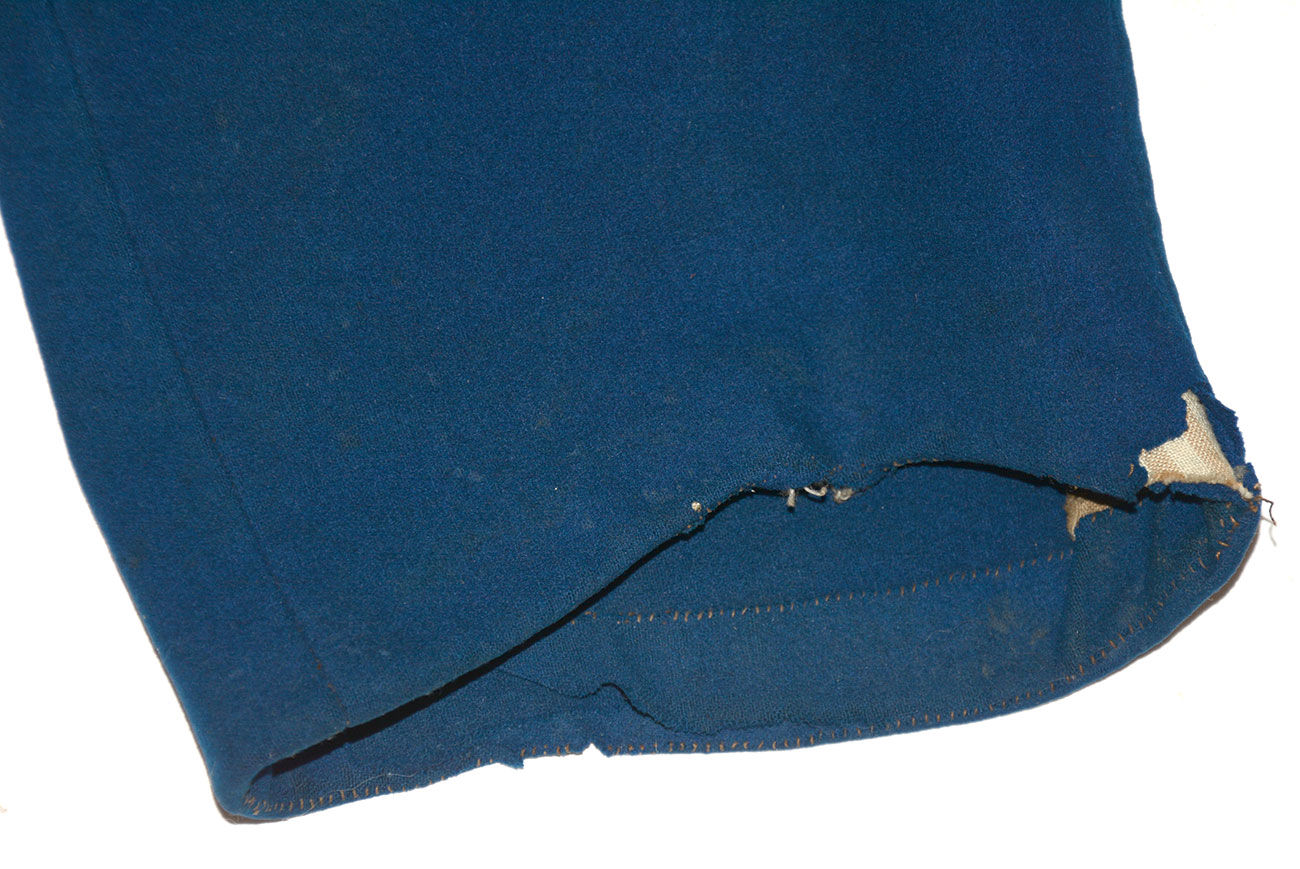
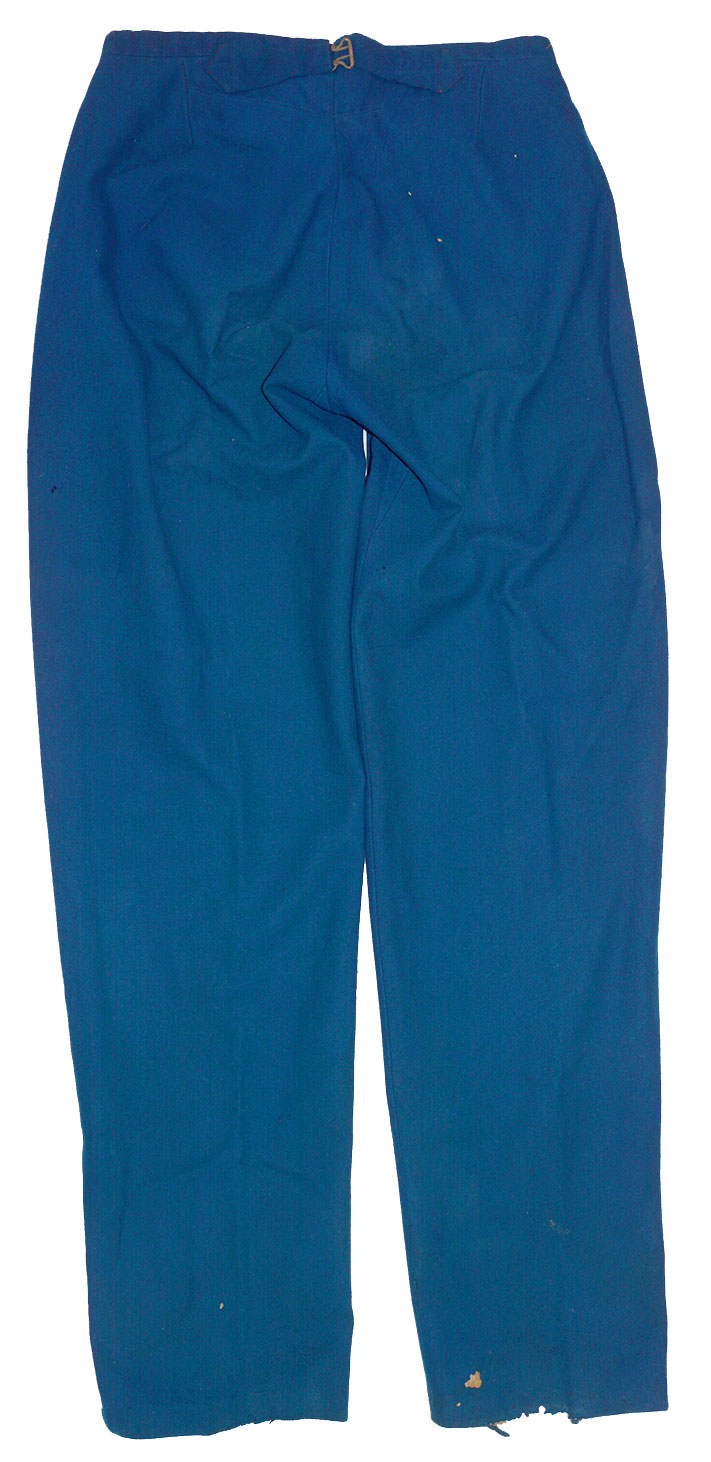
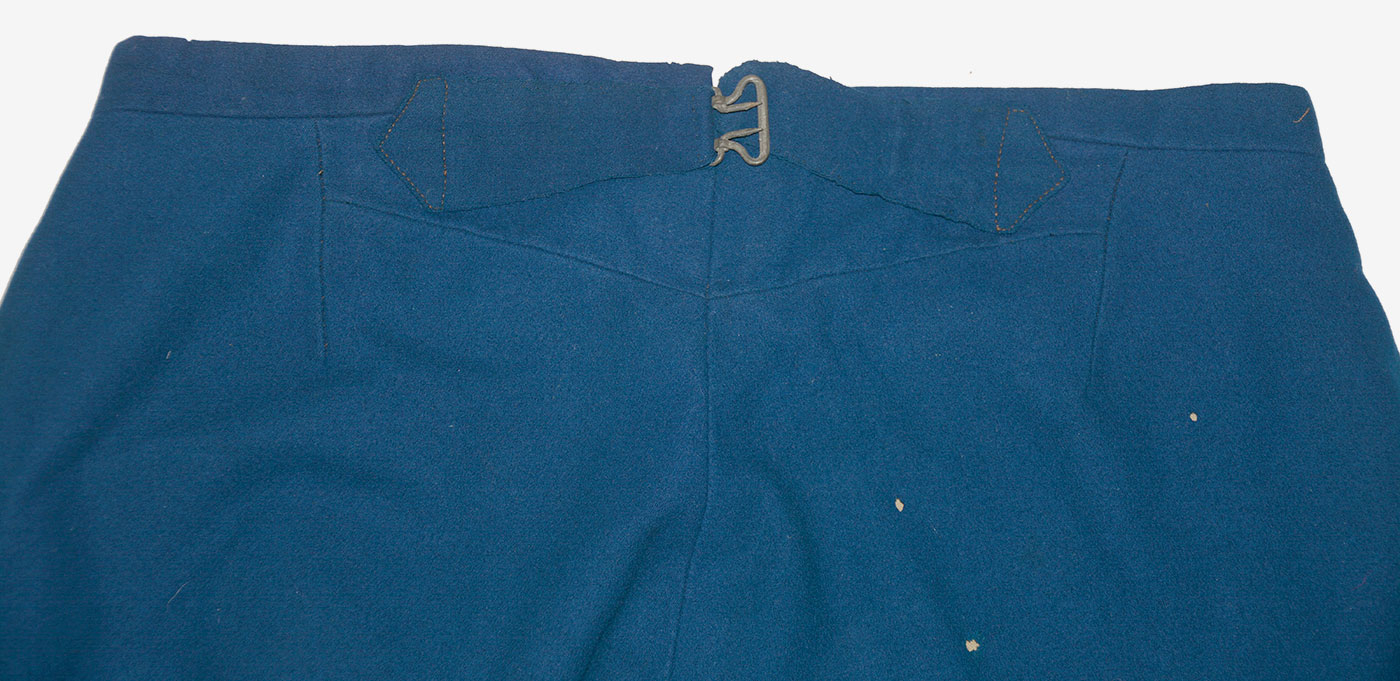
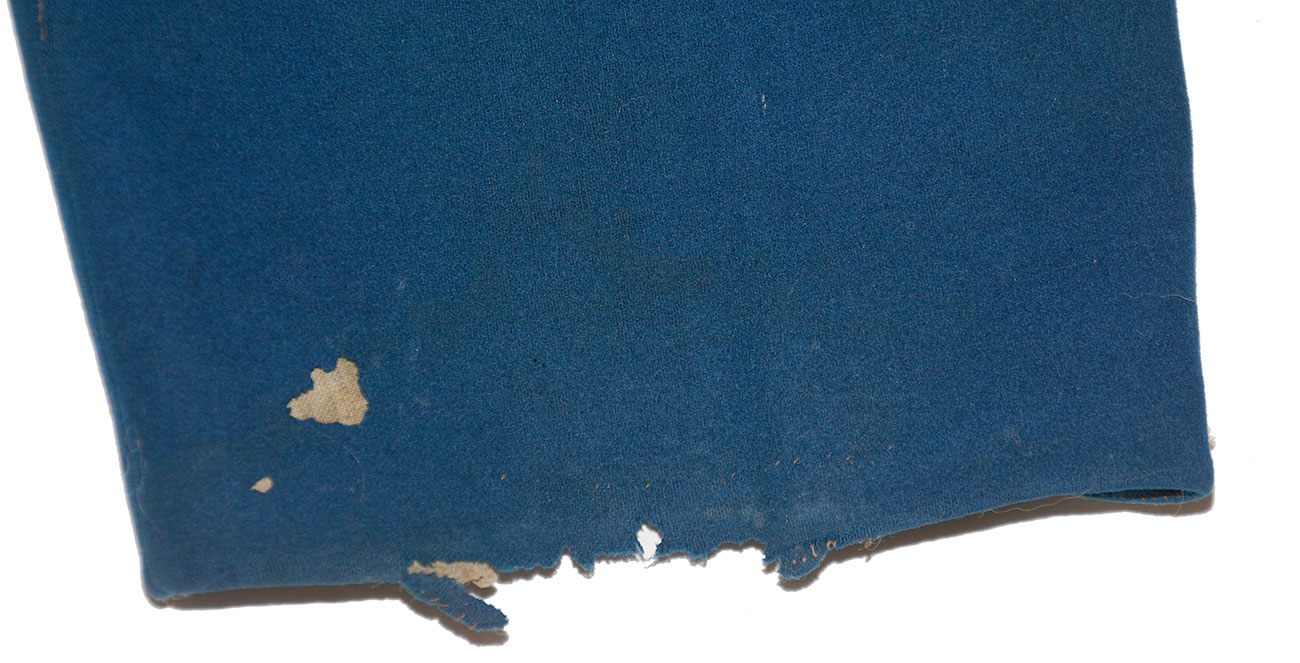
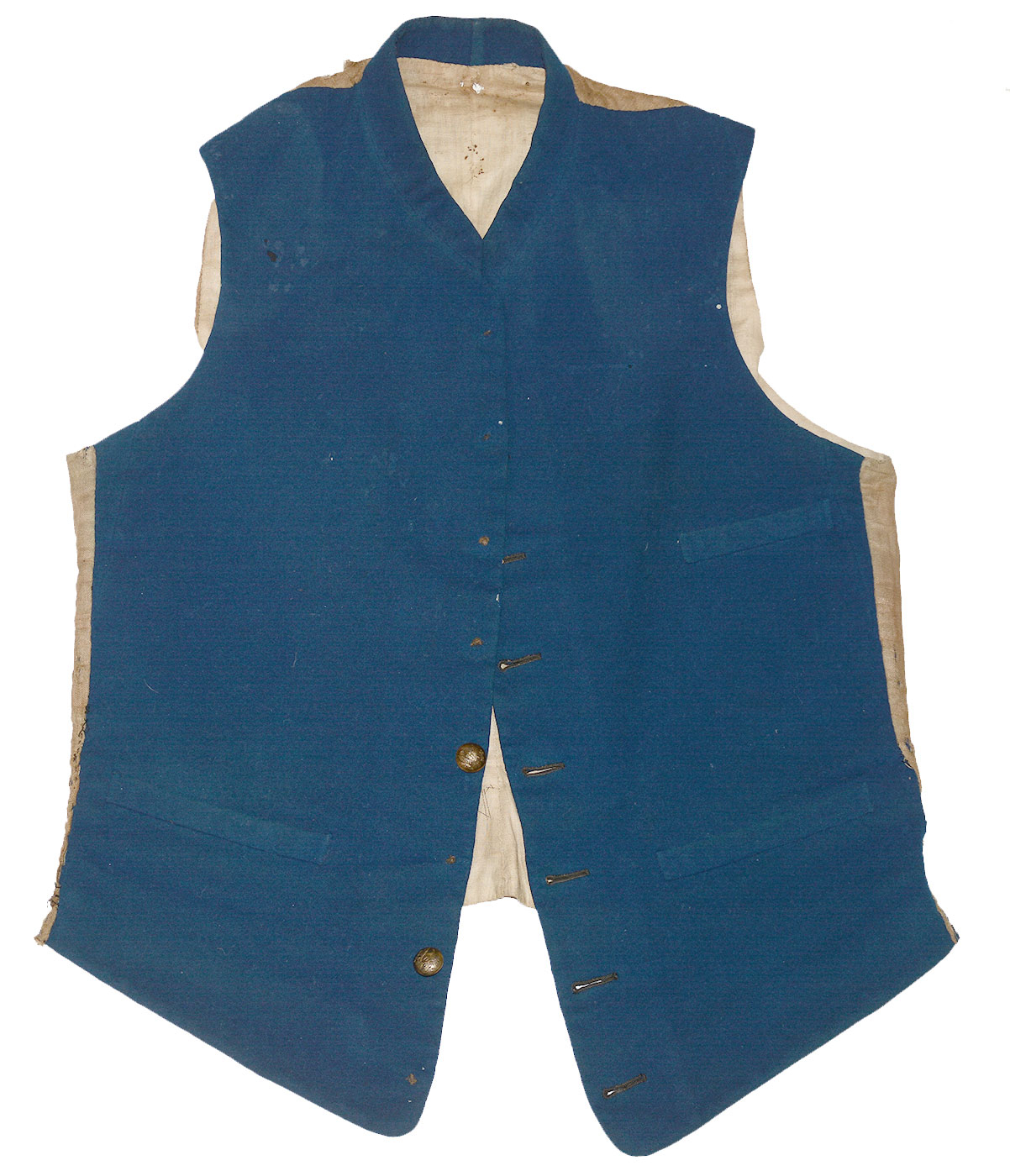
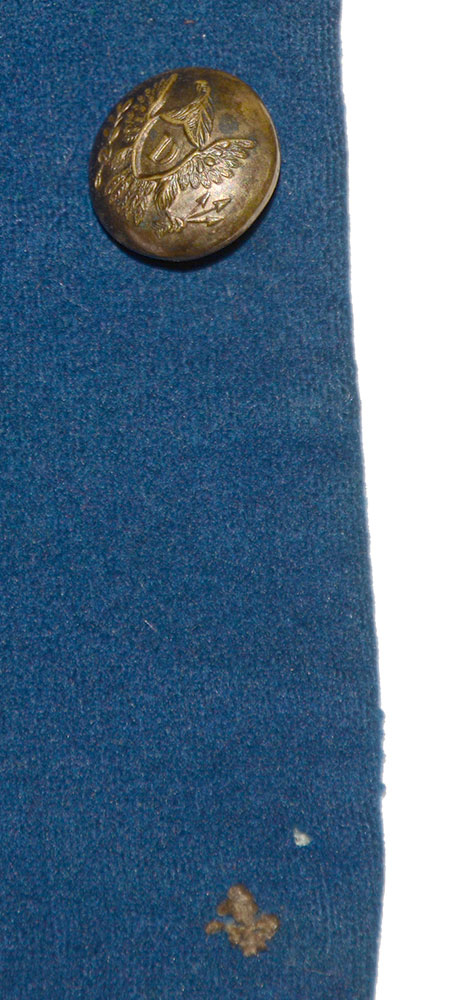
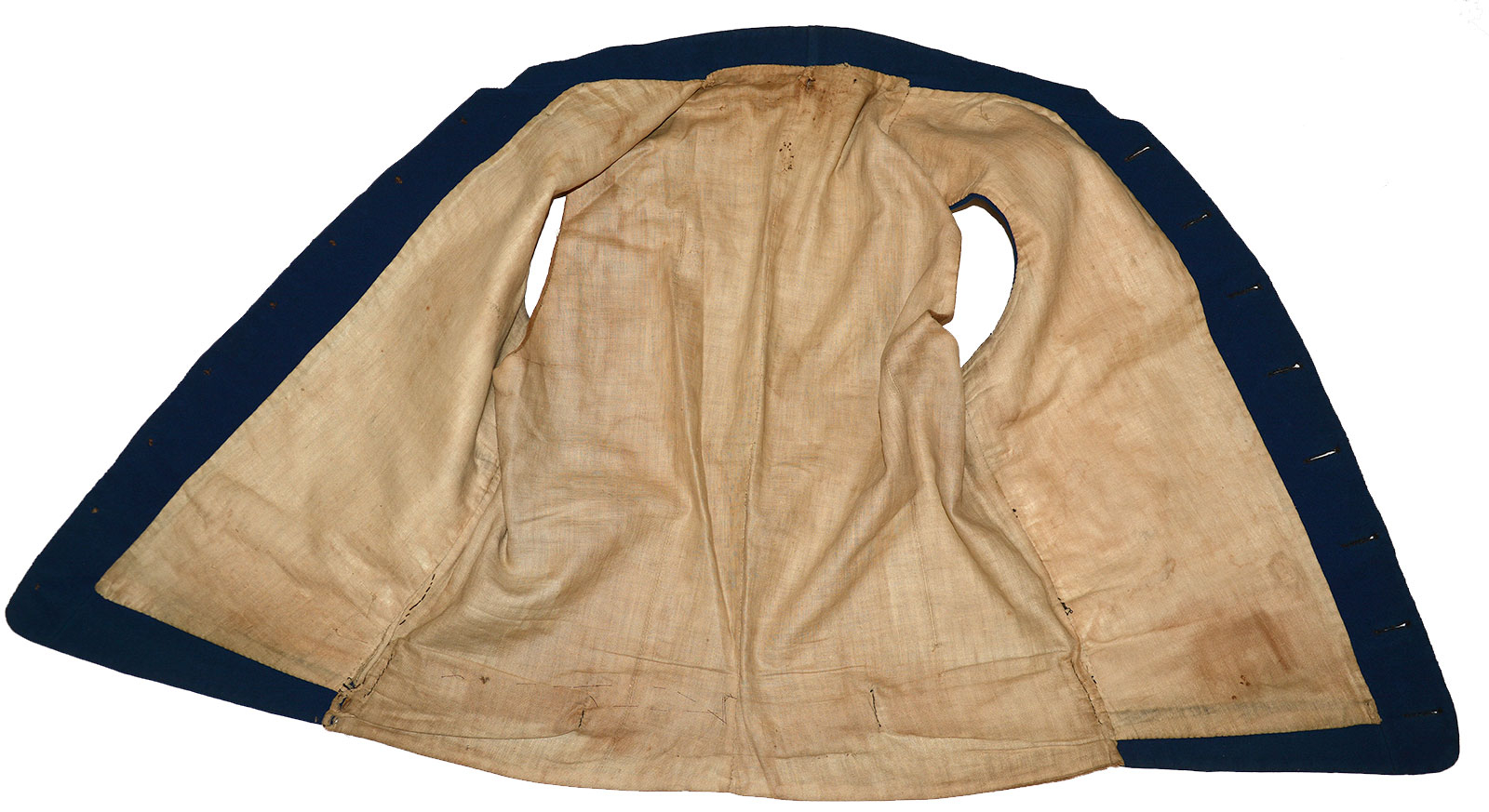
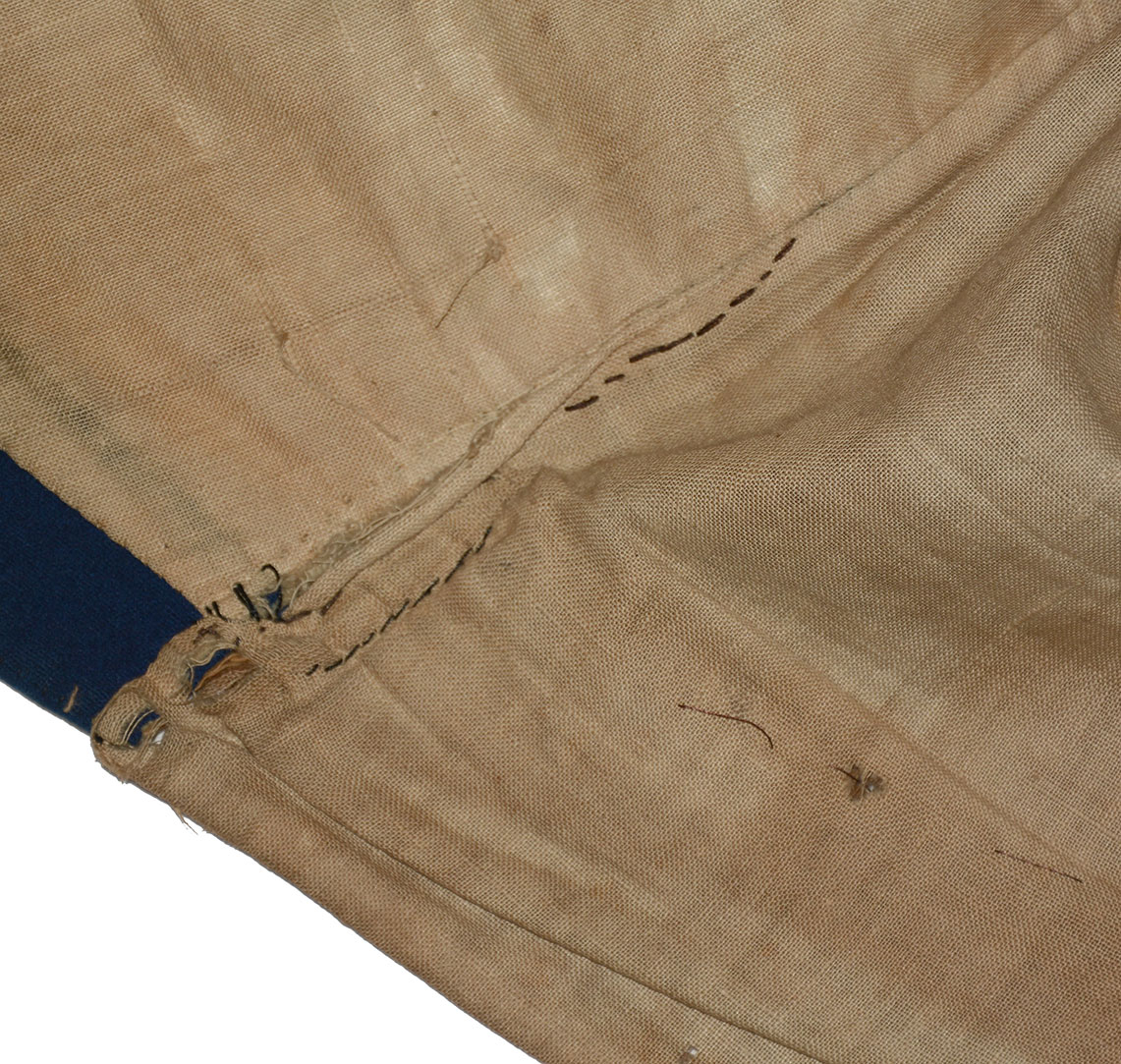
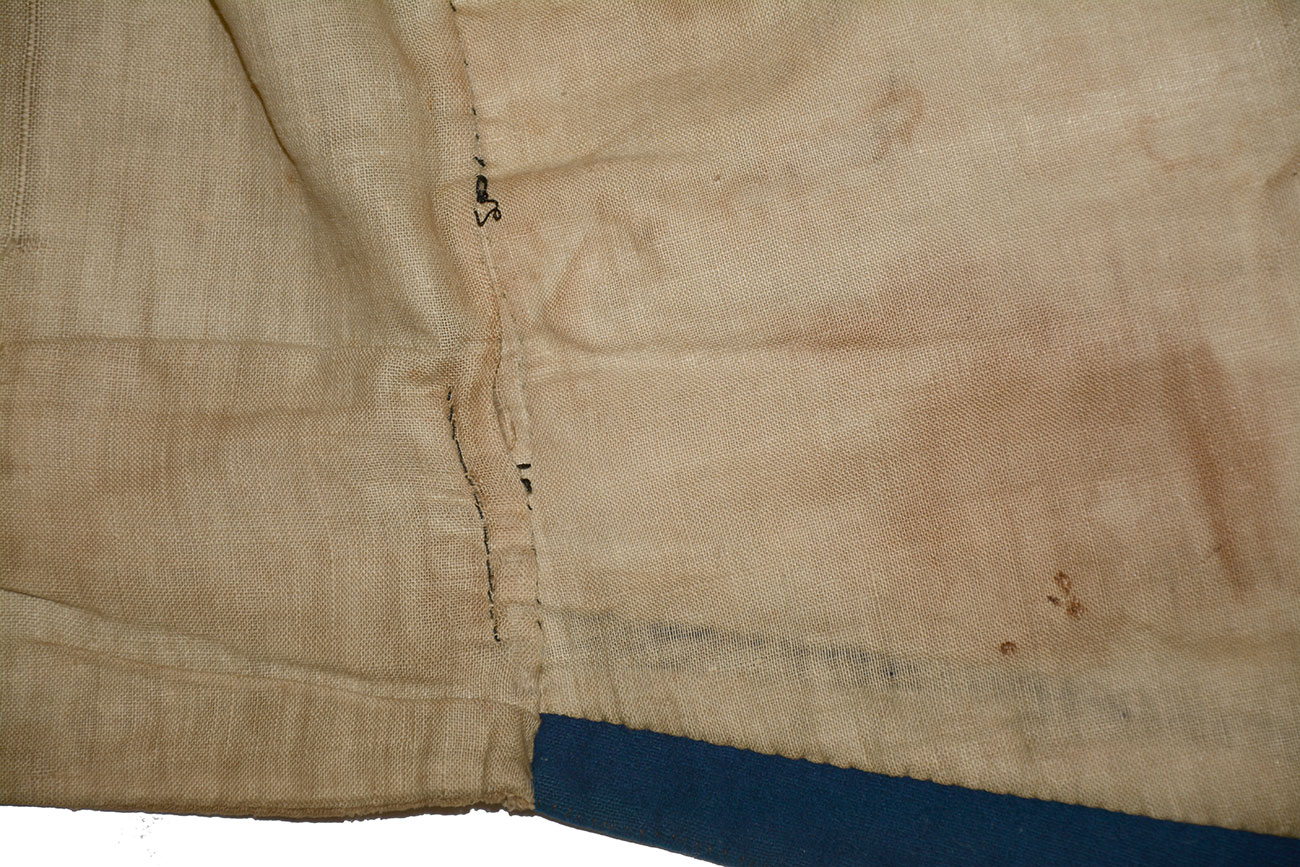
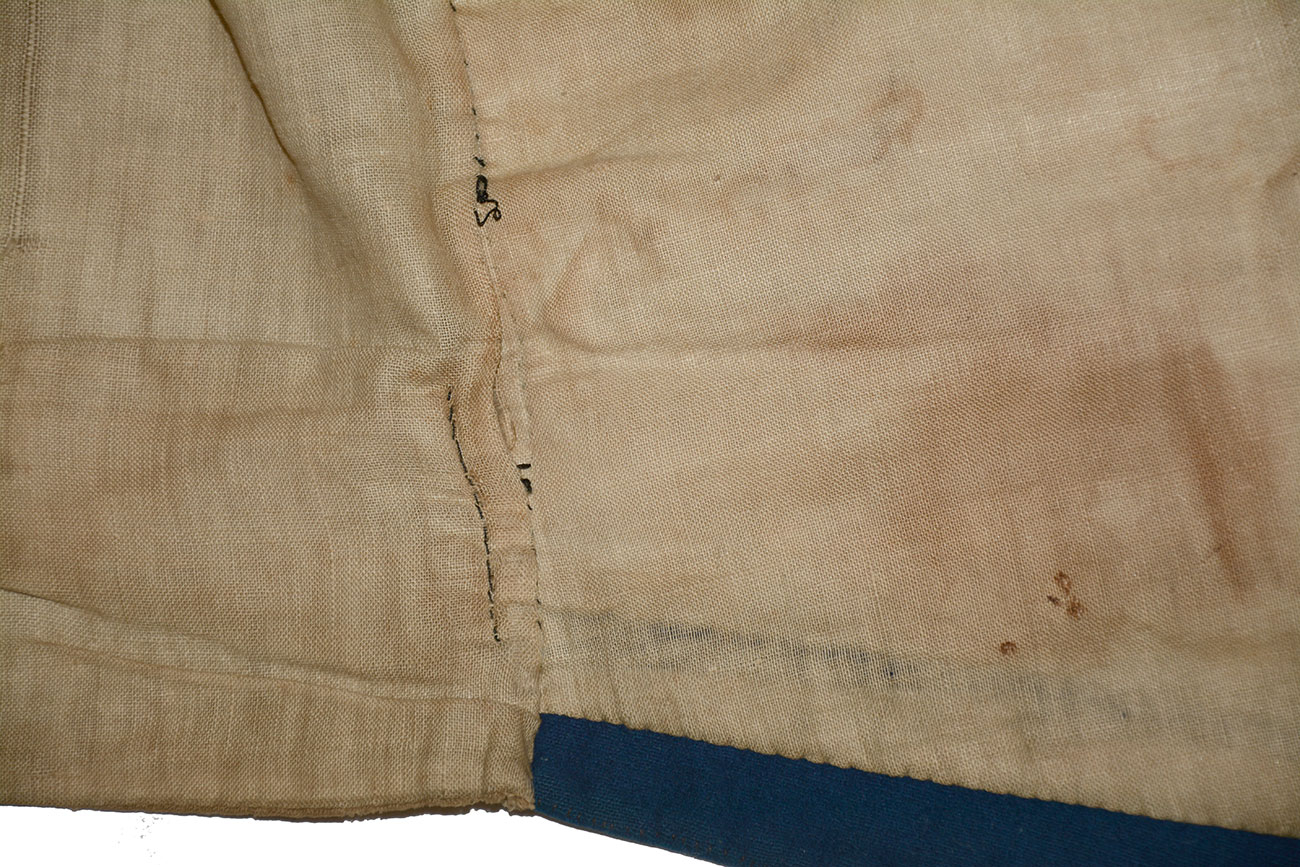
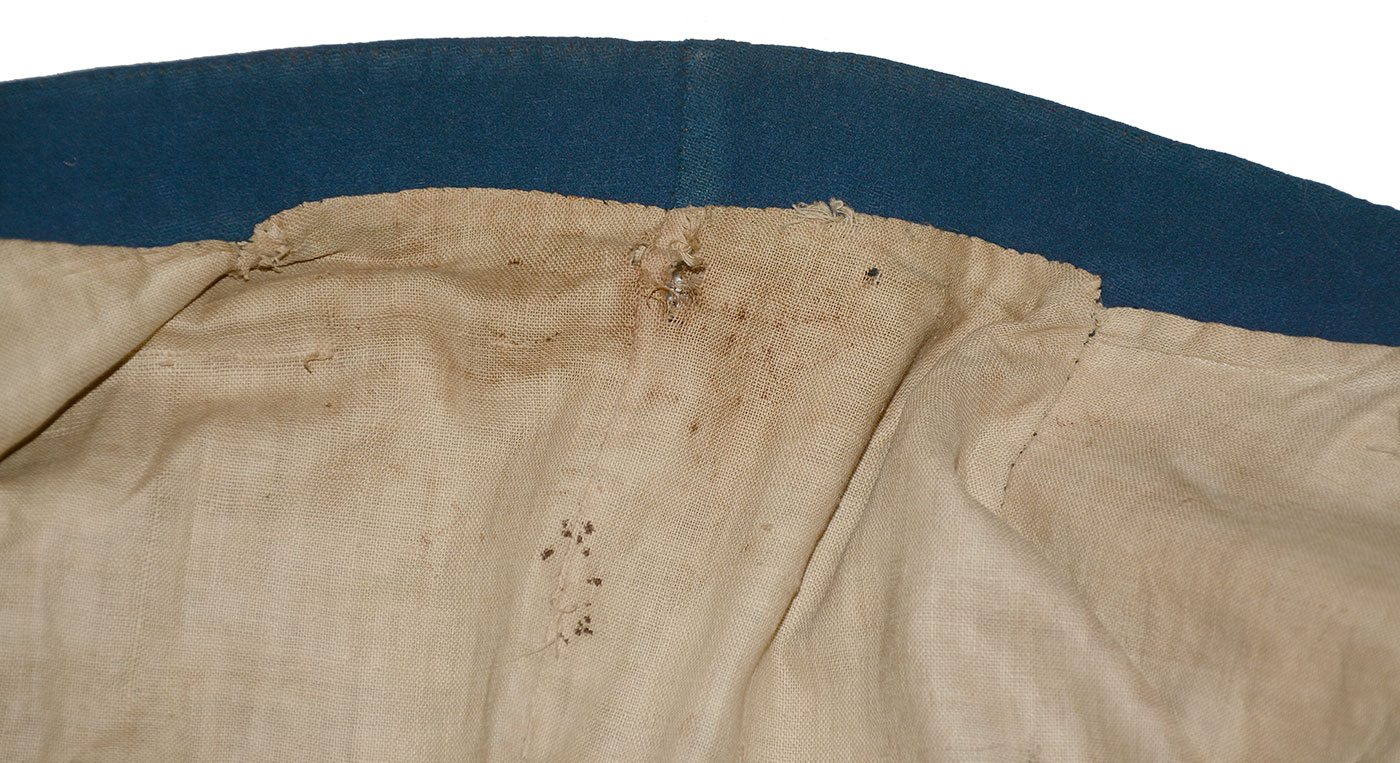
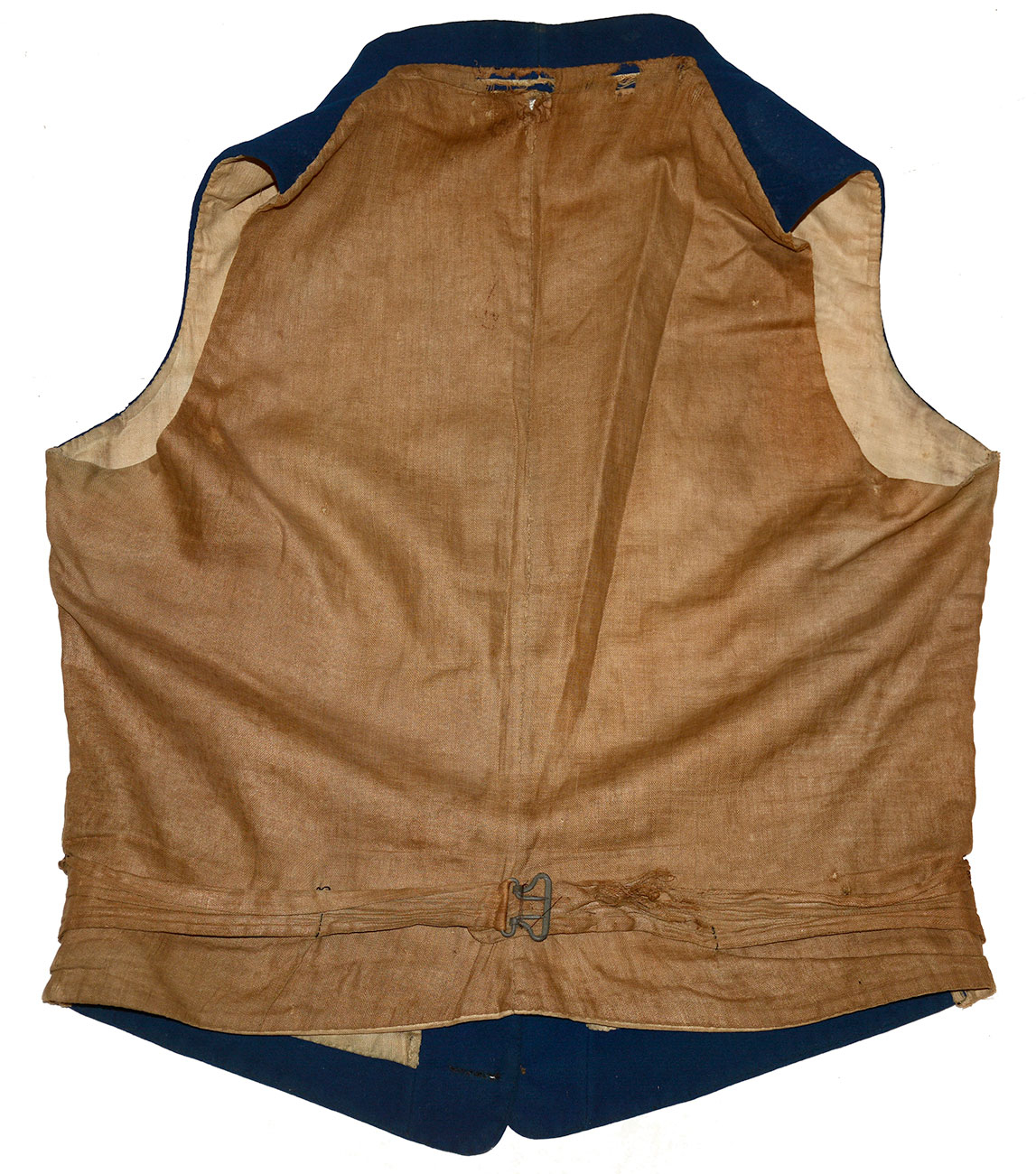
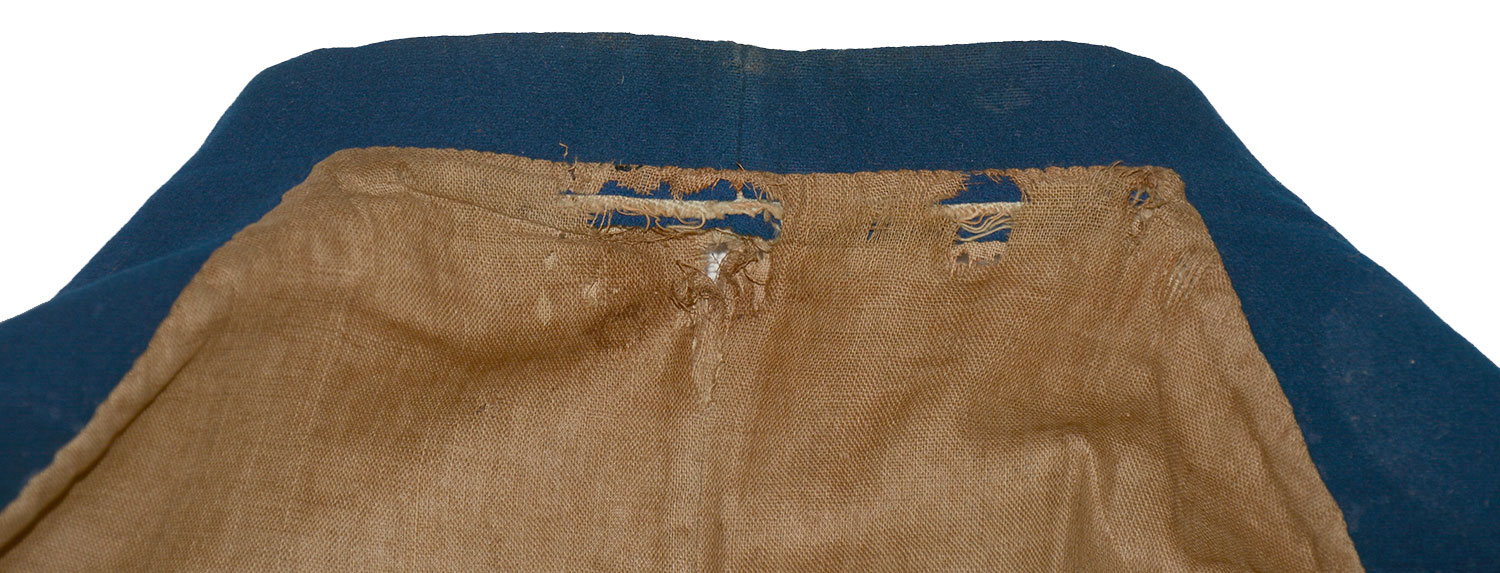
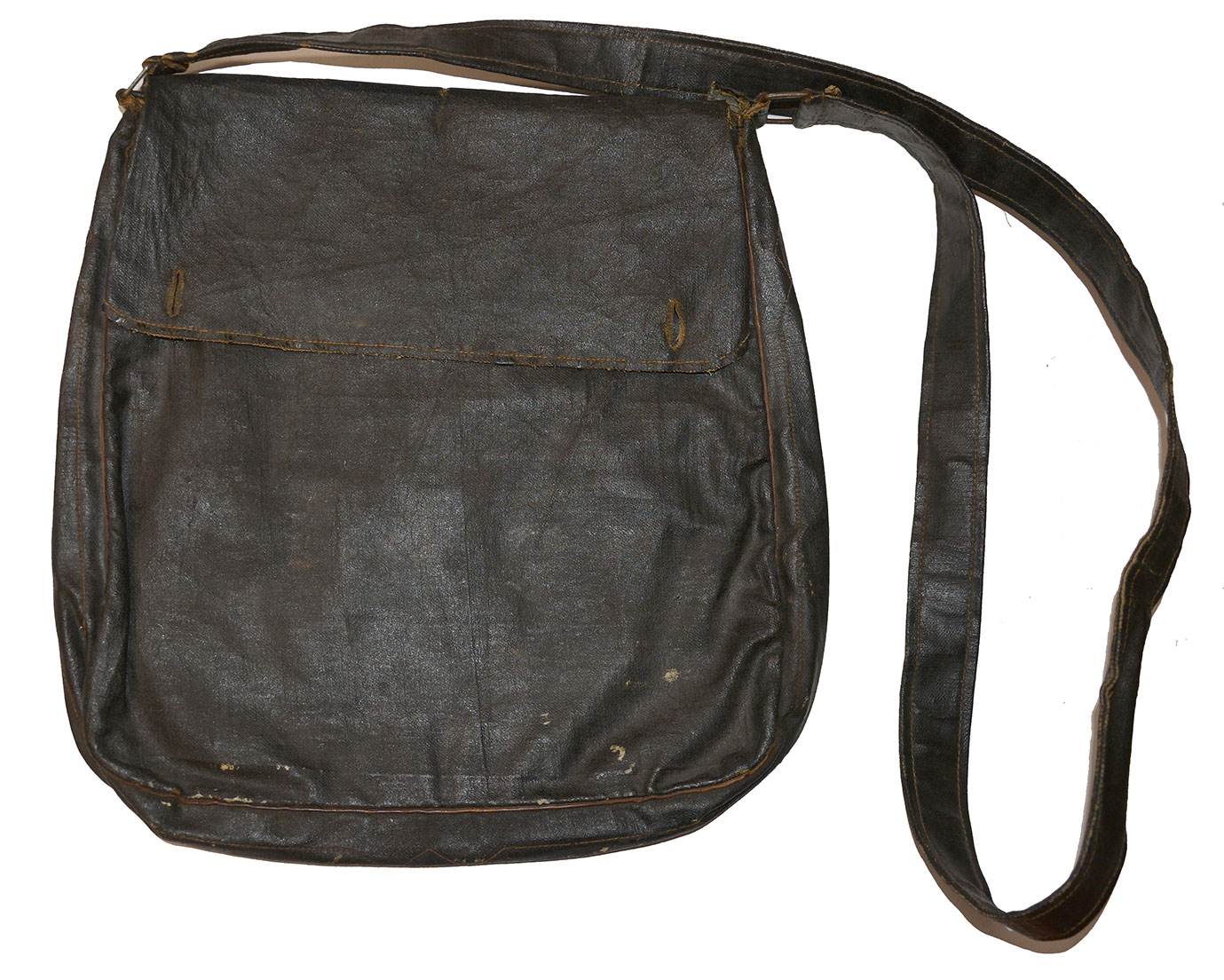
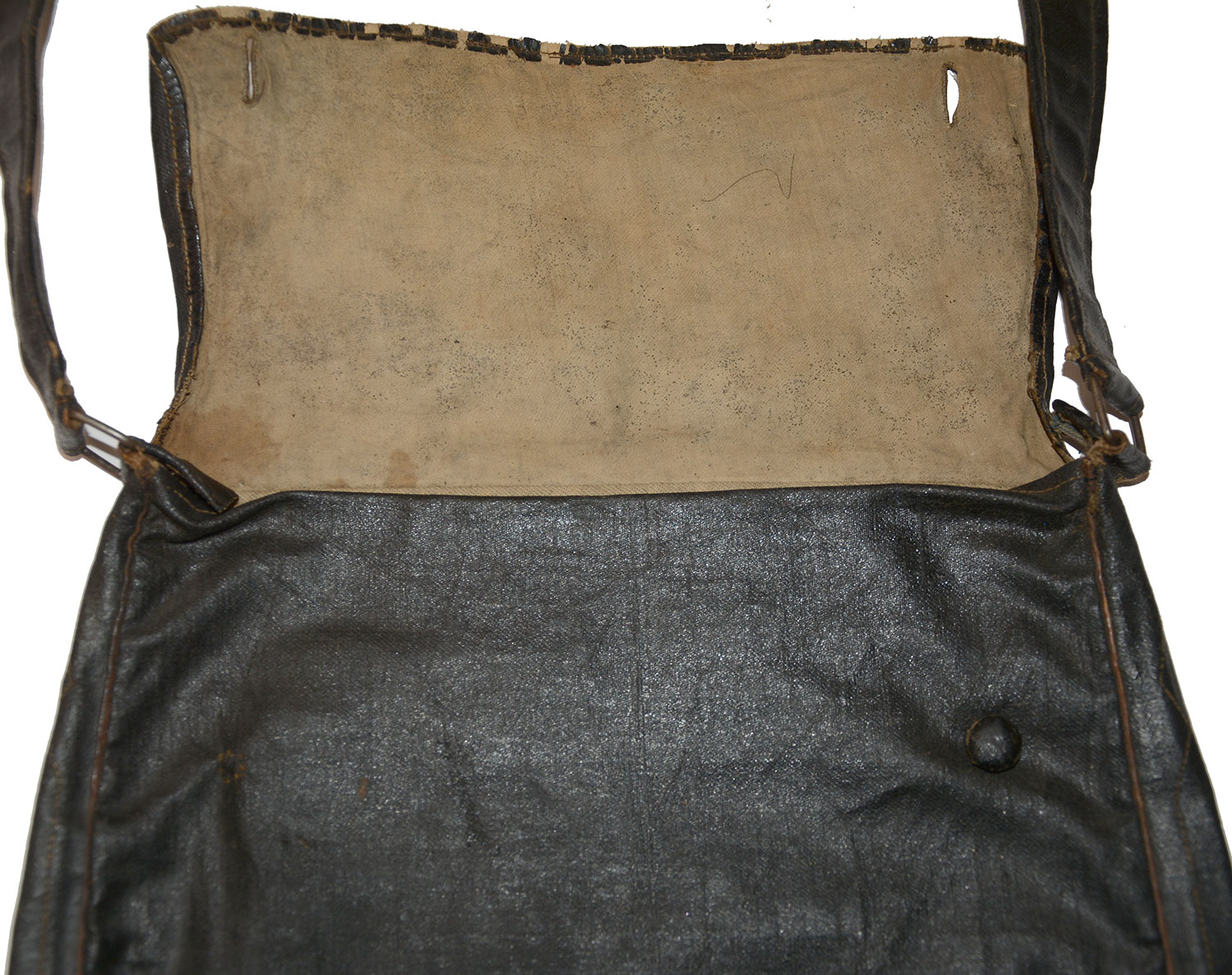
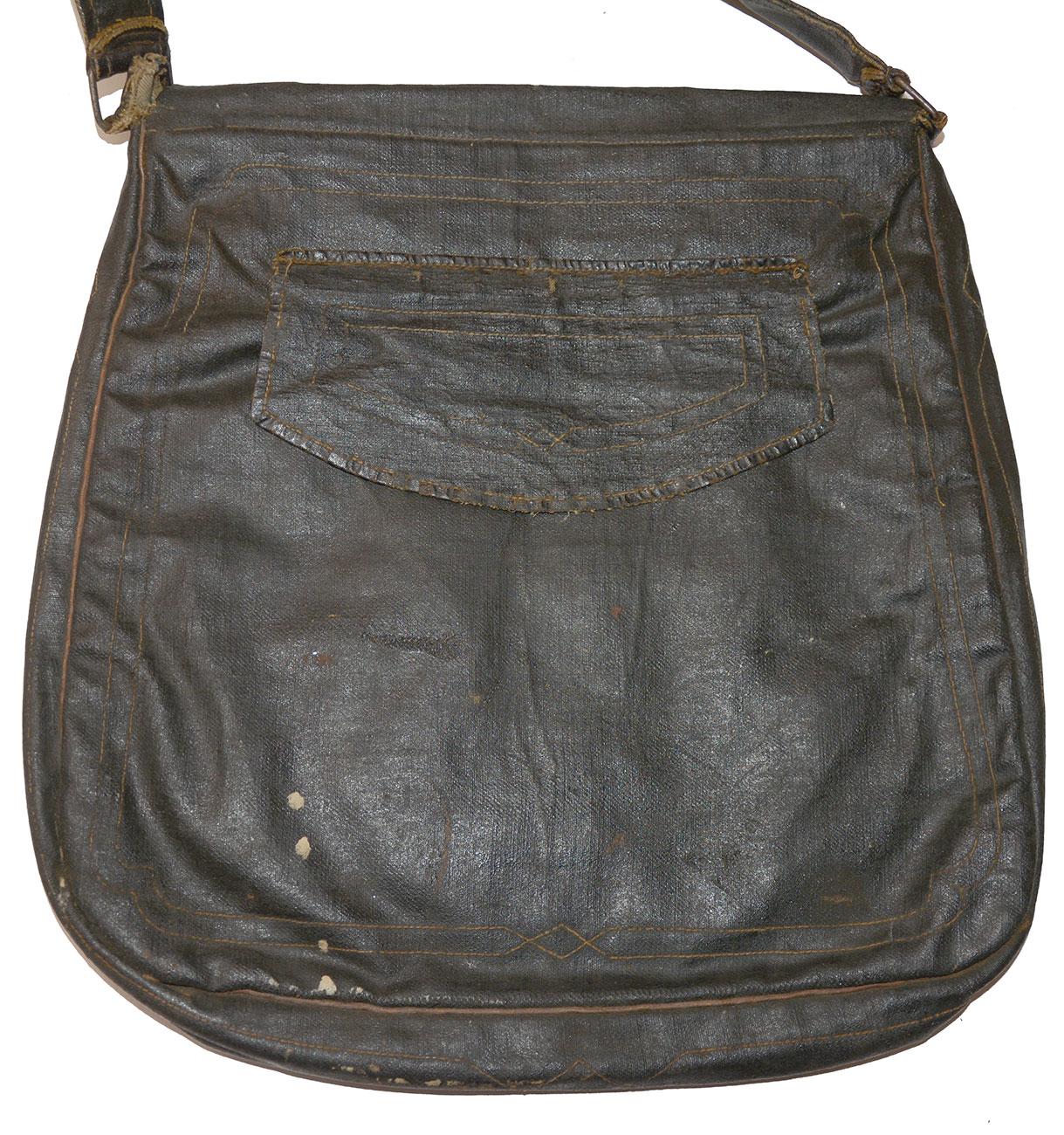
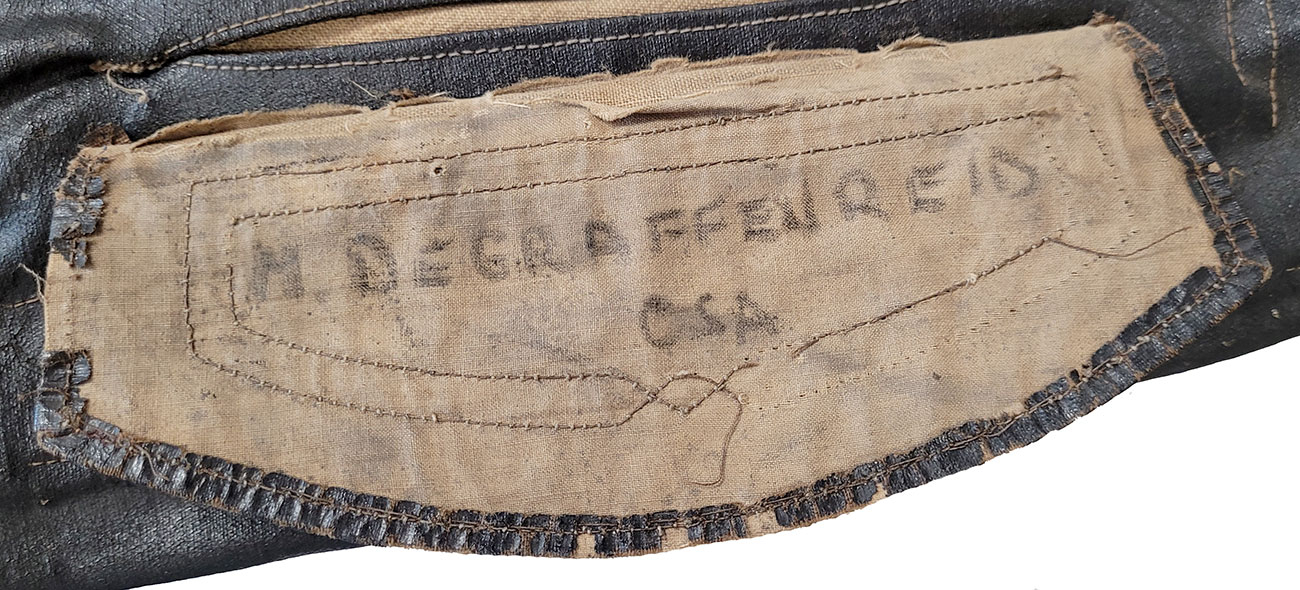
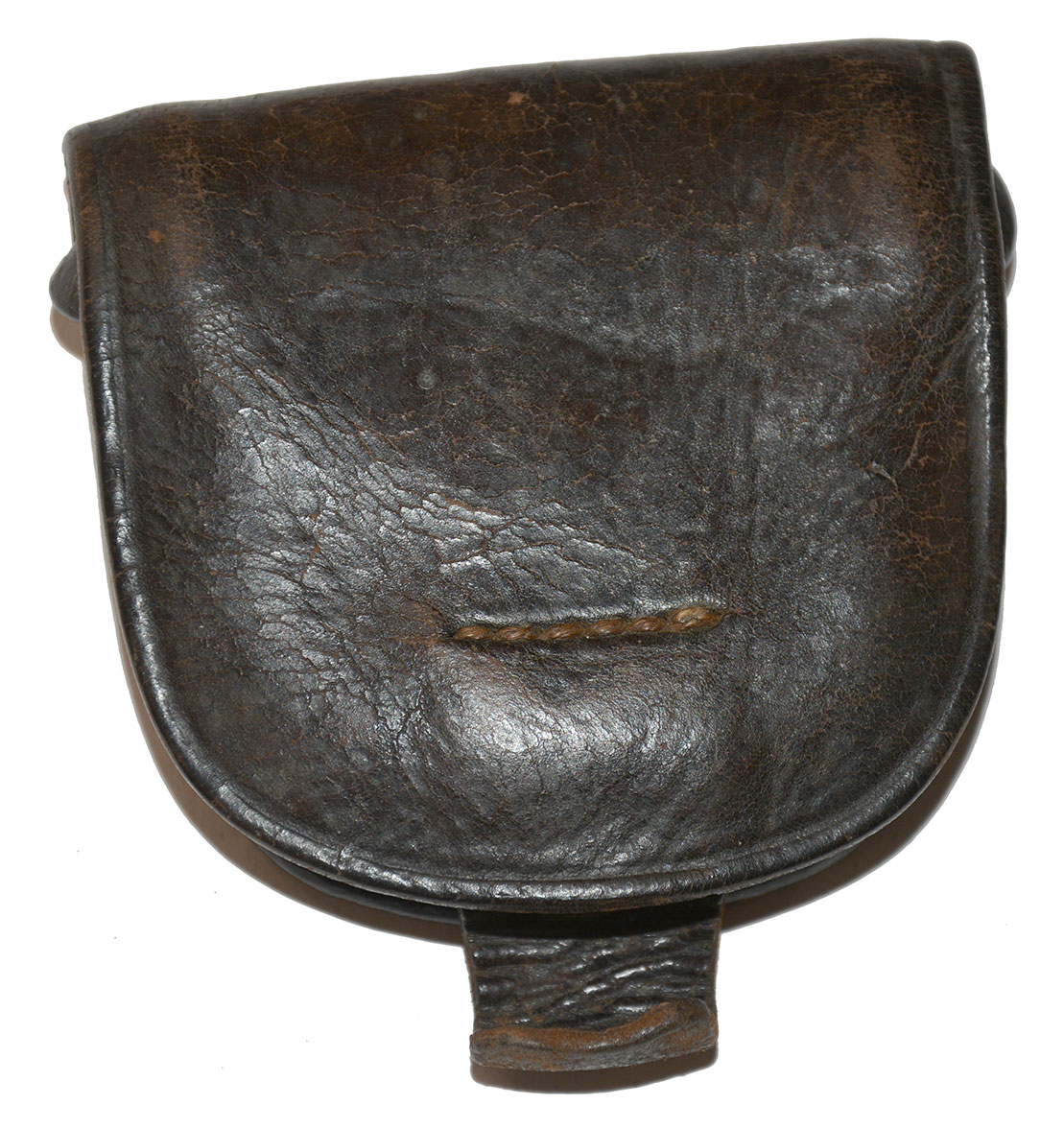
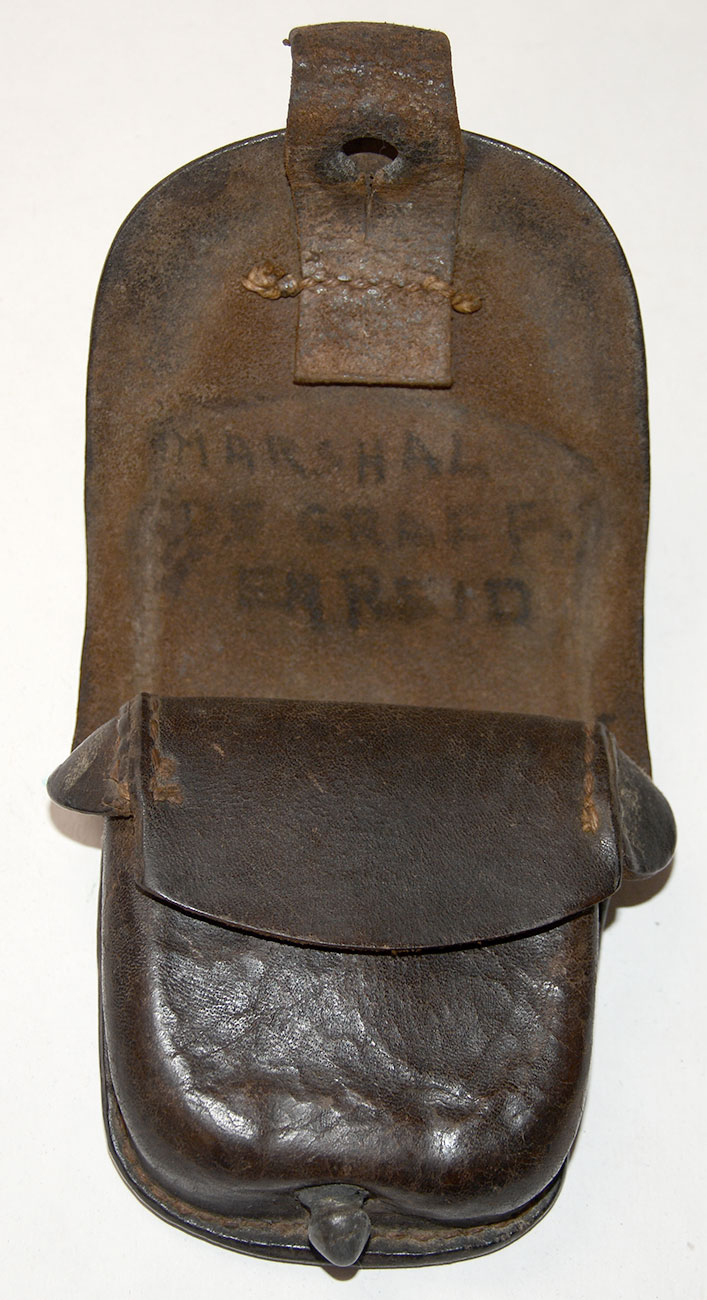

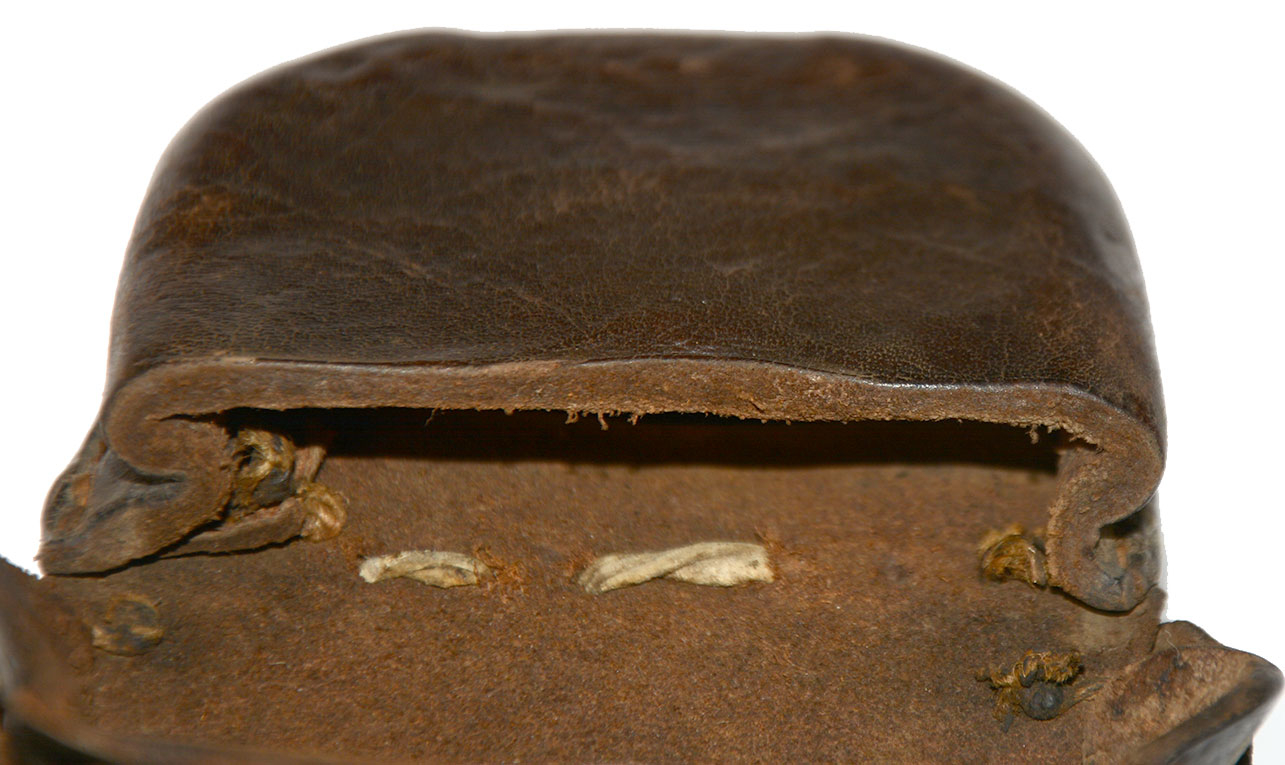

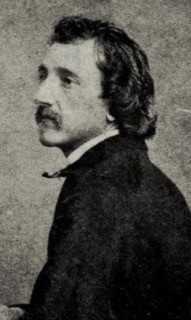
$9,500.00
Quantity Available: 1
Item Code: 1268-046
Shipping: Determined by Method & Location of buyer
To Order:
Call 717-334-0347,
Fax 717-334-5016, or E-mail
This is a great looking Confederate uniform grouping belonging to the impressively named Marshall H.A. DeGraffenreid, a Lieutenant in the “First Georgia Regulars” from 1862 to 1865, who saw action in Virginia, Florida, and the Carolinas, featuring his matching medium blue vest and trousers worn, along with his officer’s style haversack and a great example of the quintessential Confederate cap box. These were recently on display at the Texas Civil War Museum and are accompanied by a really nice, dead real, family written brown ink note that probably rested with them in an attic trunk for decades reading: “Marshall de Graffenreid’s / Pants & Vest to Confederate / Uniform – also / 1 knap sack / 1 powder pouch.” (The family may, of course, be excused for calling a haversack and the cap box a “powder pouch.”)
DeGraffenried (1834-1898) was born in Columbus, Georgia, and did two tours of duty, one as an enlisted man and one as private. He signed up early in the war, enlisting at Macon as a private in Capt. Robert Anderson Smith’s Macon Volunteers (dating back to 1825 as a militia company) on April 20, 1861, for twelve months service. This was a day after the U.S. blockade of southern ports was announced and the same day Union forces evacuated and burned the Norfolk Navy Yard. The company left that same day by rail for Portsmouth, VA, arriving on April 23 and reporting for duty on April 26, being designated first as Co. D of the 2nd Independent Battalion Georgia Infantry, four companies strong, and then as Co. B 2nd Battalion Georgia Infantry. A May 4, 1861, Macon newspaper article lists DeGraffenried among 74 officers and men of the company at “Camp Georgia, Fort Norfolk.” They were posted at Sewall’s Point, Va, in time to be under fire on May 18-19 as U.S. gunboats engaged a Confederate battery in the attempt to keep Hampton Roads closed. The battalion remained in the Norfolk area through the winter.
DeGraffenried is listed as present on all extant muster rolls of the company into February, 1862, when he was commissioned 2nd Lieutenant of Co. F, 1st Georgia Regulars on Feb. 5, with the appointment and rank confirmed, which he accepted on Feb. 25 and was discharged to take his new post on February 26. He would hold that rank until promoted to 1st Lieutenant as of Aug. 25, 1864, though the commission does not seem to have been given until March 7, 1865, and confirmed on March 8. Receipts also show him present in November, though there are no muster rolls. It is thus unclear if he was among the 45 officers and men left with the regiment when it surrendered with Johnston’s forces in 1865, but those dates suggest he was with them close to the end in any case. Records list only two leaves of absence: one in December 1863 and one in July 1864, which would put him in the ranks for the regiment’s service at Second Manassas, Antietam, and Fredericksburg, as well as later service in Florida and the Carolinas.
Like the Macon Volunteers, the 1st Ga. Regulars had organized in Macon, also in April 1861, and in July was also sent to Virginia, where it joined Toombs’ brigade, missing Manassas, but spending the winter in the camps at Centreville. They were in the siege of Yorktown and after transferring to Anderson’s brigade saw further action on the Peninsula in the Seven Days, Garnett’s Farm, Savage Station (suffering 3 killed and 19 wounded,) Gaines Mill, Frazier’s Farm (Glendale) and Malvern Hill. In August and early September, they were engaged against Pope at Thoroughfare Gap, Second Manassas (where they lost 27 killed and 77 wounded,) and Chantilly. At Antietam they were posted in the center of the line, enduring some shell fire, then moved to the left to support Jackson and were engaged near the Dunker Church in the southern end of the West Woods. They saw further action at Fredericksburg, after which they were ordered to Florida, fighting at Olustee (losing 3 killed and 25 wounded) and in mid-1864 moving to the Charleston area, and seeing action at Savannah and in North Carolina, before surrendering with the Johnston and the Army of Tennessee.
The vest is medium blue with off-white polished cotton lining and back. It has a low, 1” tall standing collar and fastens with eight small buttons down the front, two which remain, second and fourth from the bottom and are Infantry eagle-I buttons with “superior quality” backmarks and appear to be attached by their original thread. The vest has two exterior pockets and the waist and one on the lower left breast. The condition is very good overall, solid fabric and good color. We see one very small moth nip and some light tracking on the left chest and tw slight larger bites and some tracking on the right near the armhole. The lining of the vest is very good, showing just minor stains. There are two larger holes, about 1” by ½” inch at the upper back, just below the blue wool collar that affect slightly the interior lining at that point just under the collar, but these are not particularly noticeable from the front. The waist is adjusted in the usual fashion by a cloth belt and open wire frame buckle, in this case white metal, matching the waist adjustment buckle on the trousers.
The trousers are medium blue and in excellent condition. We see just seven or eight small moth nips overall and some wear to the lower edge of the cuffs. The waist is adusted by a cloth tab at the rear and white metal frame buckle. There is a pocket either side with the opening just below the waist band, each closed by button at the upper rear corner now missing, and small watch pocket at the bottom edge of the waistband on the right. The pockets are intact, as is the lining of the waistband, which extends down about 3” and is pinked along the lower edge. There are no suspender buttons, but the yoke seems to be tailored to fit at either side. Four small bone buttons fasten the fly. The waist is fastened by a single button that looks to be hard rubber. The lower legs of the trousers are lined for about 8” up the front, likely to reduce wear when worn over a boot.
The haversack is well made of tarred canvas and retains its 1-1/4” wide shoulder strap of the same material, doubled over and sewn, attached to the sides of the bag by small rectangular iron wire loop. The strap is about 40” long and sewn to the iron loops at either end. The bag measures about 10” x 10-1/2” tall and with a flap on one side hanging down about 4-1/2” and fastening with two small black buttons, one of which is missing. The sides expand to roughly 2” wide and have decorative stitching. The interior is lined in a cream colored cloth. The other side of the bag is made with a smaller secondary flap with decorative stitching, positioned slightly below the top edge of the bag, that gives access to another cloth lined compartment. Both this smaller flap and perimeter of the bag on this side have decorative stitching. The inner flap has Degraffenreid’s name and “CSA” written in it and appear to be more an effort to preserve the identification than to deceive about the age of the writing.
The capbox is the quintessential Confederate cap box: brown leather, flap with impressed line around the edge, separate latch tab attached with a single line of stitching, pewter /lead finial, single wide belt loop on the back with impressed edge lines, moderately long inner flap with side ears. All in excellent condition, the leather soft with good finish, just minor handling marks. The sewing attaching the belt loop at top looks to have given way and been replaced with a cord or string. The latch tab is full length. Degraffenried’s name is inside the cover, but looks like a modern inscription to keep the identification with it, similar to the marking in the haversack.
DeGraffenried returned to Georgia at war’s end, becoming a lawyer. He married three times and had children from his last two marriages. He died in Atlanta May 18, 1898. This is a great looking set from and officer with considerable service and with a wonderful family note identifying it to display beside it. [sr] [ph:L]
~~~~~~~~~~~~~~~~~~~~~~~~~~~~~~~~~~~
THIS ITEM, AS WITH ALL OTHER ITEMS AVAILABLE ON OUR WEB SITE,
MAY BE PURCHASED THROUGH OUR LAYAWAY PROGRAM.
CLICK HERE FOR OUR POLICIES AND TERMS.
THANK YOU!
Inquire About ID’D GEORGIA CONFEDERATE OFFICER’S VEST, TROUSERS, HAVERSACK AND CAP BOX
Most Popular
Historical Firearms Stolen From The National Civil War Museum In Harrisburg, Pa »
Theft From Gravesite Of Gen. John Reynolds »
Selection Of Unframed Prints By Don Troiani »
Fine Condition Brass Infantry Bugle Insignia »
British Imported, Confederate Used Bayonet »
Scarce New Model 1865 Sharps Still In Percussion Near Factory New »
featured item
13-STAR CONFEDERATE FIRST NATIONAL FLAG WITH GETTYSBURG HISTORY - “GRIMES COUNTY GREYS,” CO. G, 4th TEXAS INFANTRY, HOOD’S TEXAS BRIGADE
The flag is in very good condition, with strong colors and just a few scattered small holes that do not detract. It has been archivally conserved, mounted and framed by Textile Preservation Associates and comes with their November 2020 treatment… (1179-1393). Learn More »


